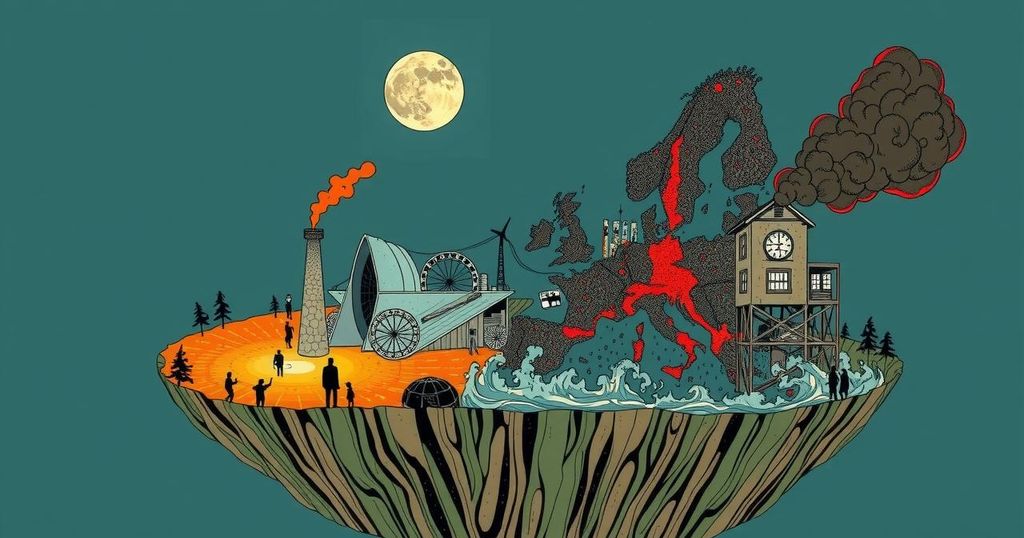World Without End: A Graphic Exploration of the Climate Crisis

“World Without End” is a graphic novel that addresses the reality of climate change through a dialogue between a climate expert and an illustrator. It underscores the human impact on climate, the misinformation surrounding it, and the interconnectedness of daily actions with environmental consequences, while also highlighting the challenges of effectively communicating urgent scientific issues to the public.
The graphic novel “World Without End,” authored by Jean-Marc Jancovici and illustrated by Christophe Blain, presents an urgent portrayal of the climate crisis through a unique blending of narrative and pictorial representation. This dialogue-driven work features Jancovici, elucidating the stark realities of anthropogenic climate change, while Blain translates these insights into compelling visuals. The novel asserts essential truths about the climate emergency: it is indeed real, primarily driven by human activities, and is progressing at an alarming pace, contradicting any notions of a natural cycle in global temperatures. Despite the consensus among climate scientists regarding the factual basis of climate change, these assertions face significant skepticism outside academic circles due to a well-funded disinformation campaign that distorts the truth. Such political polarization risks framing climate action as a partisan issue, further complicating meaningful public discourse. “World Without End” has captured international attention, establishing itself as a bestseller following its initial release in France. It draws parallels with other graphic novels that have transcended their genres, akin to works like Art Spiegelman’s “Maus” and Marjane Satrapi’s “Persepolis.” The book navigates through the complexities of climate-related issues, emphasizing the interdependence of life on Earth through engaging narratives that highlight how daily activities contribute to ecological outcomes. While the graphic novel successfully communicates critical insights, there are moments that veer into less persuasive territory, particularly in discussions about neurological and evolutionary factors behind human behavior towards climate issues. The authors endeavor to instill a note of optimism, yet they occasionally simplify intricate scientific topics, potentially equalizing their messages with those of less credible public intellectuals. Consequently, while the storytelling aspect of climate literature is vital, it must be balanced with accuracy and depth of knowledge to avoid misleading the audience.
The topic of climate change is underscored by an extensive scientific consensus, which recognizes its existence and human causation. The discourse surrounding climate change is often muddied by misinformation promoted by powerful interests seeking to maintain profit at the expense of environmental sustainability. Graphic novels have emerged as an impactful medium for portraying complex social issues, including the climate crisis, as they can convey difficult content in an accessible way that resonates emotionally with the audience. The authors of “World Without End” utilize this form to advocate for urgent action against climate changes and to convey the interconnectedness of human activities and environmental outcomes, amidst an overarching narrative driven by facts and relatable stories.
In conclusion, “World Without End” serves as both a poignant artistic endeavor and a critical commentary on the climate crisis, employing a graphic novel format to engage readers in a pressing global issue. While it makes significant strides in educating the public on climate change through an inventive format, the authors must ensure that their portrayal is rooted in complexity and nuance to effectively foster an informed public dialogue. The urgency of the climate crisis necessitates authentic communication that maximizes both storytelling and educational depth, creating a compelling call to action for collective efforts towards sustainable solutions.
Original Source: www.theguardian.com






